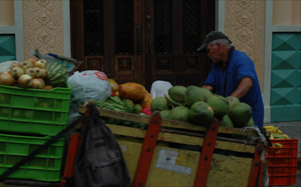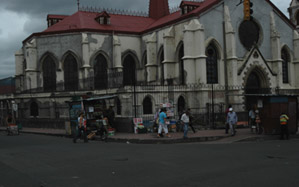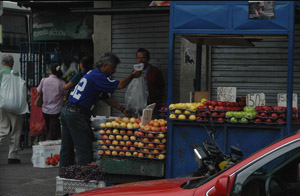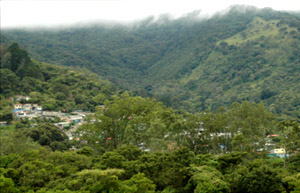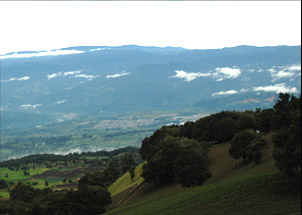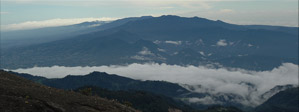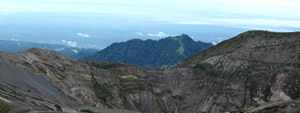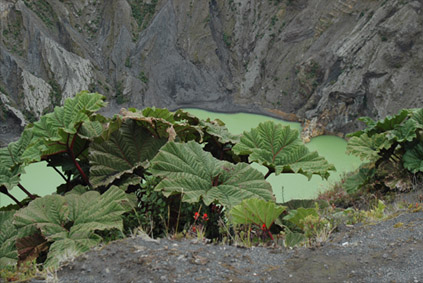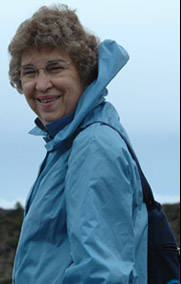Volcan Irazu'
Wednesday, September 6, 2006
Click on map text for any area.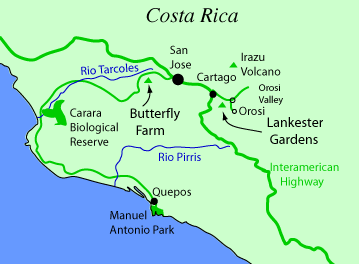 | Being very keen on getting to the Lankester Gardens, it seemed logical to take a tour that got us there and let us see some other things as well. So we booked an early tour that took us to the Irazu Volcano, the Orosi Valley and to Lankester Gardens.
The van picked us up about 8am and then picked up a couple from Dallas and we set out southward across San Jose. |
These are just scenes snapped from the van as I tried to get a feeling for what the area was like.
Grocery cart and church in San Jose.
San Jose market and mountainside housing in the more open area between San Jose and Cartago.
More rural market in Cartago. Leaving Cartago and heading up the mountain toward Irazu.
The town crawled up the side of the mountain, but soon gave way to open fields. We saw a lot of food crops being grown, notably potatoes and onions.
As we climbed steeply up the mountainside, there were places where we could look back to the valley and see Cartago. We watched fieldwork in the sloping fields. It looked like they were digging potatoes.
 | High on the mountainside there were dairy farms and more cattle. It is pleasant slopes now, but in 1963, when Charles and Wanda were here on their year of language study, Irazu erupted all year. An underground reservoir somewhere near here burst out and took mudslides down the mountain. |
We were now at high altitude and the air was cool. It almost had the feel of Switzerland to me. | 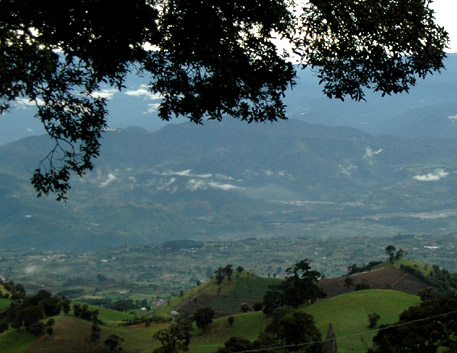 |
We made it to the top at 11,200 ft (3432 meters officially). At left above is the mountain ridge to the north, and one of those peaks is the volcano Poas. At right above is the view eastward from the summit, and you can see the shoreline of the Atlantic ocean in the distance.
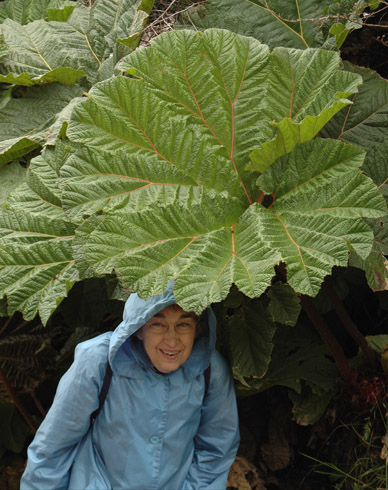 | We came back down from the high summit to the observation area where you can walk to the edge and look down in the craters. One of the most fascinating things there was the "poor man's umbrella" plant with huge leaves. These plants were quite abundant around the edge of the crater. The other plant I had been intrigued with on the way in was the one giving brilliant patches of red among the green plants.
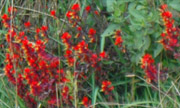 |
Up close, this flower showed some rough edges, but it certainly retained its brilliant red color. The plant reminded me a little of indian paintbrush, but it had broader petals and was more brilliant. | 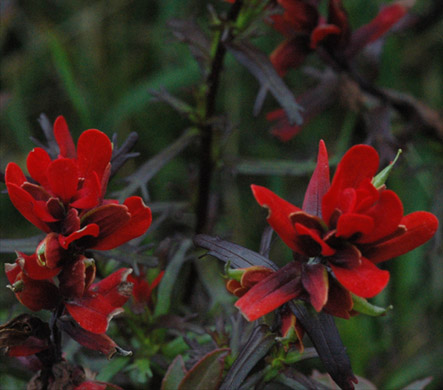 |
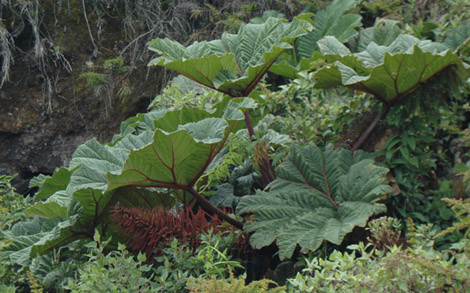 | The whole hillside above the crater rim was covered with this luxuriant plant. I had never seen anything like it before. |
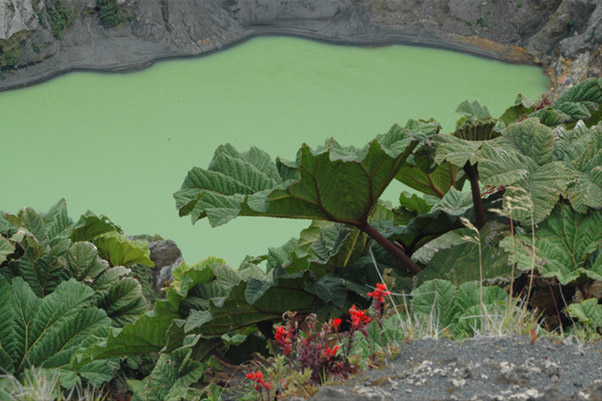
I thought I was going to tear my attention away from these plants and look at the crater, but when I looked over the edge, there were my two new plant friends, hanging on the edge.
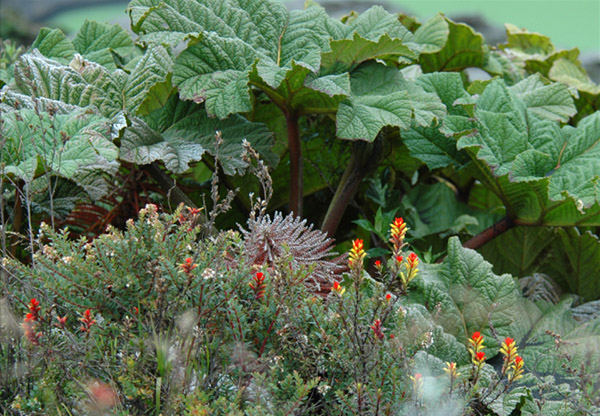
Well, OK, its just become theme and variation on the umbrellas and the red flowers with the green lake in the background. All of this was just natural, I think, but it surely produced some nice flower arrangements. The pinkish cluster is actually part of the umbrella plant I think - at least I saw such a cluster with lots of the umbrellas. | 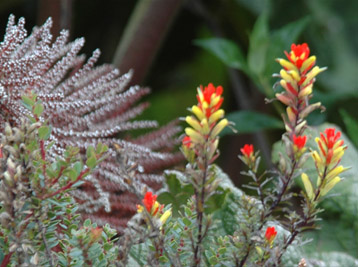 |
With the geometry of the crater and the position of the rails, there was just no way to get a picture of Brenda with the green lake of the crater in the background. So she is on the right, and t he thing she is looking at is on the left.
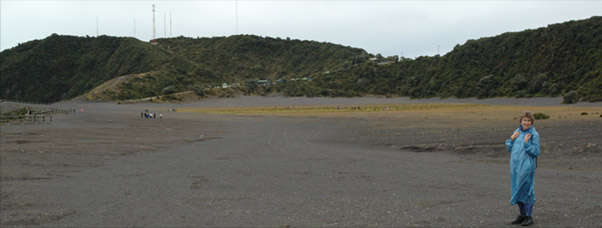
The crater with the lake is one crater out of three, and the other two left a broad flat area of sand, like a large beach on top of the mountain. You can see the visitor headquarters up the angled road from the "beach", to the right of the forest of antennas that take advantage of the fact that this is the highest point around.
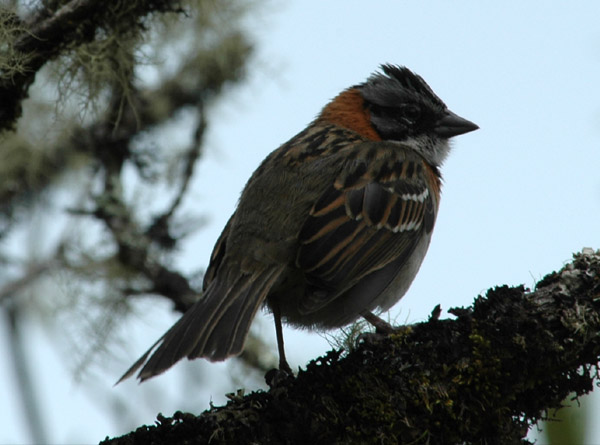
The bright-colored birds of the jungle were hard to photograph, but this fellow posed nicely on our way to the van.
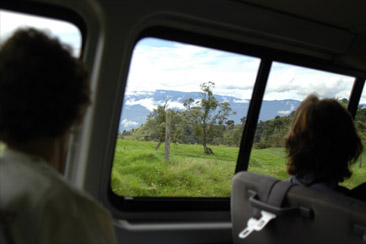 | We enjoyed the ride back down the mountain to Cartago. We now knew what to expect and could look for things we missed on the way up. It had cleared up a bit, so we got good views of the valley. In the view below, I'm not sure whether that is San Jose or Cartago, but our guide mentioned seeing both of them from the mountain. |
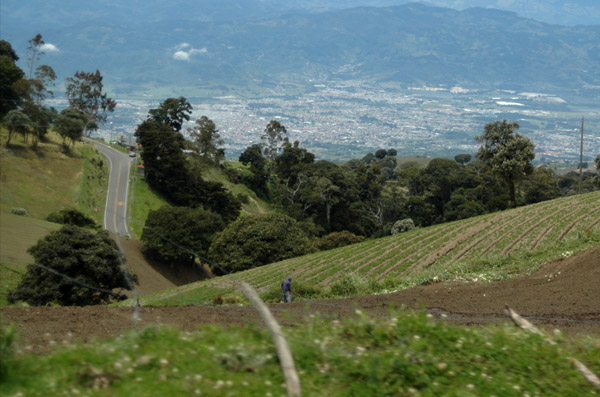
The rich volcanic soil on the slopes of Irazu was certainly under intensive cultivation. This looks like a large potato field. | 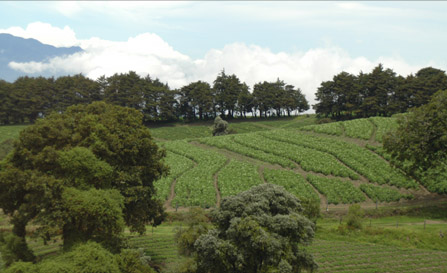 |

One more view over the cultivated land to the central valley where lie San Jose, Cartago, and a large fraction of the population of the country.
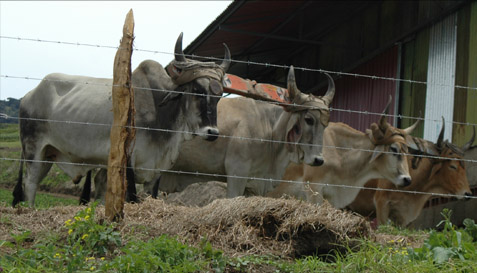 | Two yokes of what you might call oxen, but we grew up calling them just brahmin cattle. |
|
Index
2006
Costa Rica |

